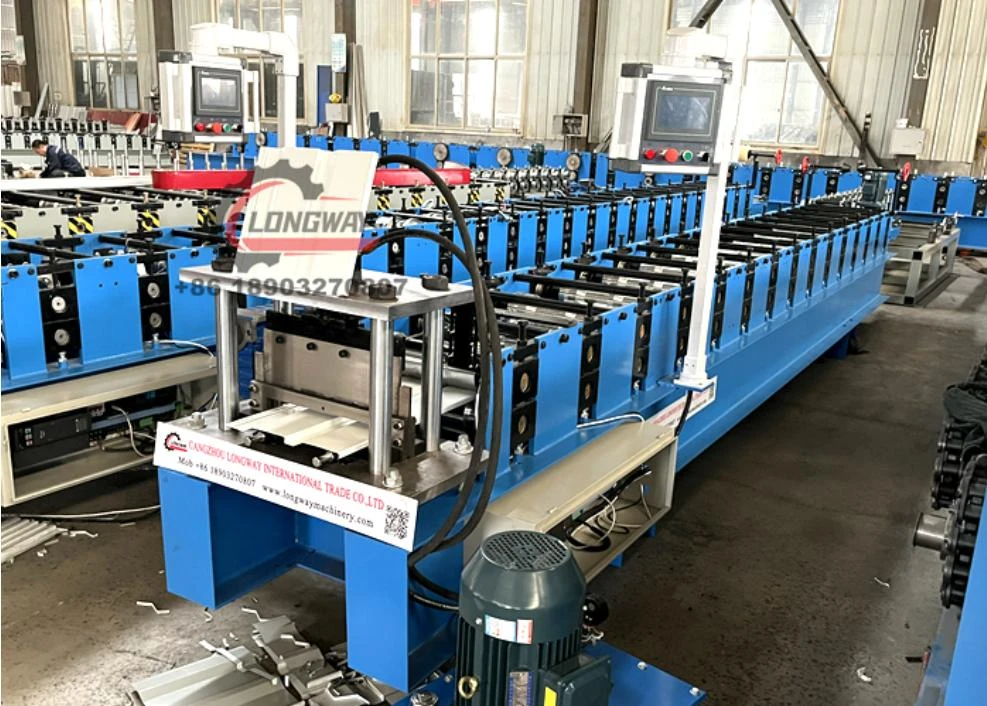Purlin Z Beam Roll Forming Equipment for Efficient Metal Fabrication Solutions
Understanding Purlin Z Beam Roll Forming Machines
In the construction industry, the need for durable and sturdy structural elements is paramount. Among these, purlins play a crucial role in supporting roofs and walls, forming a key component in steel buildings. One increasingly popular method to manufacture these components is through the use of purlin Z beam roll forming machines. This article delves into what these machines are, their working principles, benefits, and applications.
What is a Purlin Z Beam Roll Forming Machine?
A purlin Z beam roll forming machine is designed to create Z-shaped steel purlins from flat metal coils. These machines utilize a series of rollers to gradually shape the steel into a Z profile, which offers high strength and structural integrity. These machines are automated and can produce purlins in various sizes and specifications to meet different construction needs.
Working Principle
The operation of a purlin Z beam roll forming machine begins with feeding flat steel coils into the machine. The coil is then unwound and guided through a series of rollers that progressively shape it into the desired Z profile. The machine may include several critical components
1. Decoiler This component is responsible for unwinding the metal coil and feeding it into the roll forming line.
2. Rollers The heart of the operation, rollers shape the metal as it passes through, gradually forming it into the Z beam profile.
3. Cutting Device After the desired length is achieved, a cutting mechanism trims the formed metal to size. This is often done using a hydraulic or mechanical cutter.
4. Stacker Finally, the finished Z purlins are automatically stacked for transportation or further processing.
Throughout the entire process, advanced control systems manage the settings for speed, cutting lengths, and other parameters, ensuring consistency and precision in the final product.
Benefits of Using Purlin Z Beam Roll Forming Machines
1. Efficiency The automated nature of roll forming machines allows for mass production, significantly increasing manufacturing output compared to traditional methods.
purlin z beam roll forming machine

2. Cost-Effectiveness With lower labor costs and reduced material waste, these machines lead to substantial savings in production costs.
3. High Precision Roll forming machines are designed to produce consistent and accurate results. The precision in forming the Z purlins ensures they fit perfectly into construction projects, maintaining structural integrity.
4. Versatility These machines can produce various sizes and types of Z purlins, enabling manufacturers to serve diverse customer needs without requiring multiple machines.
5. Durability and Strength The Z shape enhances the strength-to-weight ratio, making it an ideal choice for supporting structures in buildings.
Applications
Purlin Z beams manufactured by roll forming machines are widely used in various applications, including
- Roof Support They act as vital structural elements in steel-framed buildings, providing support and stability.
- Wall Structures Z purlins are integral in wall systems, enhancing the rigidity of the framework.
- Industrial Structures Factories, warehouses, and storage facilities often utilize Z purlins due to their strength and cost-effectiveness.
- Agricultural Buildings These beams are also common in the construction of barns and other agricultural structures needing reliable support.
Conclusion
Purlin Z beam roll forming machines have revolutionized the way structural elements are manufactured in the construction industry. Offering efficiency, precision, and versatility, they have become essential tools for manufacturers looking to meet the growing demands for robust structural components. As the construction industry continues to evolve, these machines are likely to play an increasingly significant role in ensuring the creation of durable, high-quality buildings. Investing in state-of-the-art roll forming technology can provide businesses with a competitive edge, meeting the challenges of modern construction head-on.
-
Roof Panel Machines: Buying Guide, Types, and PricingNewsJul.04, 2025
-
Purlin Machines: Types, Features, and Pricing GuideNewsJul.04, 2025
-
Metal Embossing Machines: Types, Applications, and Buying GuideNewsJul.04, 2025
-
Gutter Machines: Features, Types, and Cost BreakdownNewsJul.04, 2025
-
Cut to Length Line: Overview, Equipment, and Buying GuideNewsJul.04, 2025
-
Auto Stacker: Features, Applications, and Cost BreakdownNewsJul.04, 2025
-
Top Drywall Profile Machine Models for SaleNewsJun.05, 2025








